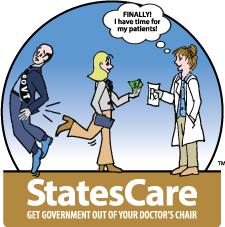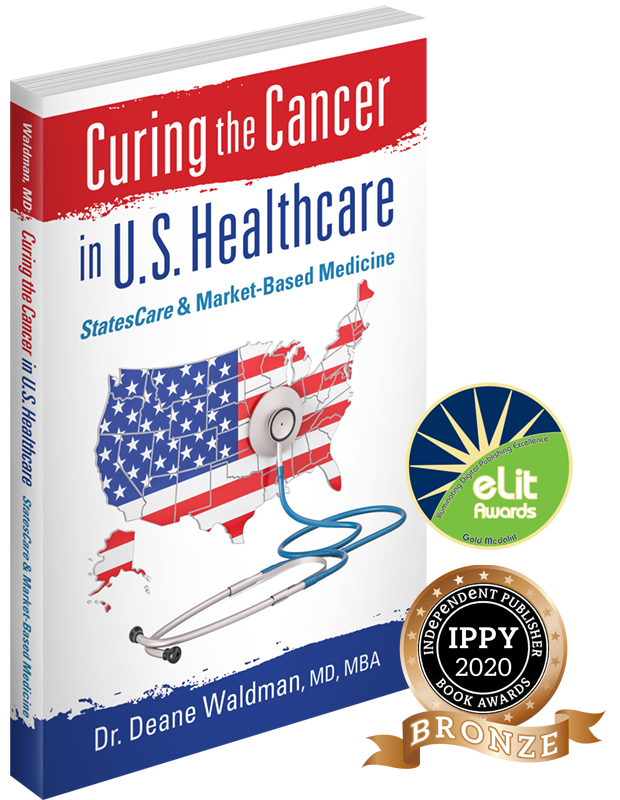
Children Belong in Classrooms Not Bedrooms
By Deane Waldman, MD MBA - 08/09/20
With the summer drawing to a close, the big question for nearly 60 million U.S. school-age children is whether they can return to school, or must they remain at home, limited to remote learning? States and municipalities differ widely on whether and how to reopen schools based on differing assessments of the risks.
The teacher unions are resisting school reopening with political demands that have nothing to do with teaching, such as defunding the police, passage of Medicare for All, and elimination of competing charter schools.
On Fox and Friends on August 5, 2020, President Trump said it was safe to reopen public schools because children are "almost immune." Reopening would benefit both children and teachers and would allow parents to return to work.
Immediately following the president's "almost immune" assertion, PolitiFact wrote that childhood immunity is a lie, that there is no evidence to support such a claim. The Wall Street Journal headline on August 10, 2020 read: "Virus risk to kids now seen higher."
The lack of unselected, mass population testing for both the COVID-19 antigen, as a marker for current infection, and COVID-19 antibodies that indicate previous infection, limits what can be reliably claimed about the health risks of re-opening our schools. However, useful, reliable data do exist.
First, some clarity of terms is necessary. "Total U.S. COVID cases," reported as 5,246,209, refers only to those who are tested. This is a population preselected because of the presence of symptoms. The actual number of COVID-19 cases is certain to be much higher. According to a small study of asymptomatic volunteers in Santa Clara County, Calif., the number of untested asymptomatic COVID infections may be 50 to 85 times greater than reported total cases.
"COVID deaths," currently at 166,090, are another misnomer. The majority of these deaths are with the virus, not because of it. Most of those who died likely succumbed to their pre-existing life-threatening medical conditions such as diabetes, immune compromise, heart or kidney failure, and chronic lung disease. Often the deceased had two or more of these conditions.
Of the first 150,000 patients tested for COVID-19, 25,00 were under age 19 years, a childhood incidence of 1.7 percent who tested as positive - i.e., infected. CDC data gathered from 14 states from March 1, 2020 to July 25, 2020 reported hospitalization rates of 164.5 per 100,000 for adults and 8 per 100,000 in children. Children are much less likely to become severely ill when infected.
On August 5, 2020, the same day as President Trump made his "almost immune" claim, the CDC reported 142,164 total deaths attributed to COVID-19. Forty-five of these deaths, 0.03 percent, were children. In other words, the likelihood that a child infected with COVID-19 will survive is 99.97 percent.
Strictly speaking, children are not completely immune to infection, but they are, indeed, "almost immune." Most definitely, children are highly resistant to illness and death from the virus.
Though the scourge of poliomyelitis has been eliminated in the U.S., the virus is still alive in nature and active in pockets in Mexico. It cannot gain a foothold here because we developed herd immunity. When enough Americans have been infected with COVID-19 and have developed their immune responses, both antibody and cellular, we may acquire herd immunity and be able to say goodbye to COVID-19.
Based on the above information, it is safe for American children to return to in-person schooling.
It is also safe for teachers, provided they have no pre-existing serious medical conditions. Studies in the U.S. and Italy show that the risk of serious illness and death from COVID is directly related to having one or more comorbidities noted previously. Without diabetes, immune deficiency, etc., a healthy teacher's risk is similar to the seasonal flu. Teachers who have serious pre-existing medical conditions should remain quarantined but could be "virtual" teachers from home.
Why Read This Article:
The big question for nearly 60 million U.S. school-age children is whether they can return to school
By Deane Waldman, MD, MBA, author of "Curing the Cancer in U.S. Healthcare"
Professor Emeritus of Pediatric, Pathology, and Decision Science; former Director of Center for Healthcare Policy at Texas Public Policy Foundation; and author of award-winning, "Curing the Cancer in U.S. Healthcare: StatesCare and Market-Based Medicine."
Mailing address:
ADM Consulting & Books
PO Box 37396
Albuquerque, New Mexico 87176-7396
Copyright © 2015-2019 ADM Consulting & Books. All Rights Reserved. All other trademarks on this site are the property of their respective owners. Site design and maintenance by www.DesignStrategies.com.



